
ARCHITECTURAL HISTORY
Scope & Guideline
Advancing Scholarship in Architectural Heritage
Introduction
Aims and Scopes
- Historical Analysis of Architectural Movements:
The journal focuses on various architectural styles and movements, analyzing their historical significance and the cultural contexts that shaped them. - Interdisciplinary Approaches:
It integrates methodologies from art history, sociology, and cultural studies, encouraging a multidisciplinary perspective on architectural history. - Regional and Global Perspectives:
The journal not only covers Western architecture but also emphasizes non-Western architectural practices and their histories, fostering a more inclusive discourse. - Social and Political Dimensions:
It investigates the relationship between architecture and power dynamics, exploring how built environments reflect and influence societal structures. - Gender and Diversity in Architecture:
The journal highlights contributions from diverse voices, particularly focusing on gender and underrepresented groups within architectural history.
Trending and Emerging
- Sustainability and Environmental Concerns:
There is an increasing focus on sustainability in architectural practices, emphasizing the historical context of environmental considerations in design. - Architecture and Identity:
Emerging themes explore the intersections of architecture with identity, race, and cultural representation, particularly in relation to marginalized communities. - Digital Humanities in Architectural Research:
The integration of digital tools and methodologies in architectural research is gaining prominence, allowing for new ways of visualizing and analyzing historical data. - Architecture in Conflict and Post-Conflict Contexts:
Research is increasingly addressing the role of architecture in conflict zones, examining how built environments influence and are influenced by socio-political turmoil. - Public Engagement and Community Involvement:
There is a growing emphasis on how architectural history engages with public memory and community narratives, fostering a participatory approach to architecture.
Declining or Waning
- Traditional Architectural Histories:
There is a noticeable decline in papers solely focused on traditional architectural histories without critical engagement with contemporary issues or interdisciplinary approaches. - Eurocentric Narratives:
The journal is moving away from predominantly Eurocentric narratives, as there is a growing emphasis on global perspectives and inclusivity in architectural discourse. - Static Theoretical Frameworks:
The reliance on static or outdated theoretical frameworks in architectural analysis is waning, with a shift towards more dynamic and contemporary methodologies. - Biographical Studies of Architects:
Fewer papers are dedicated to biographical studies of individual architects in isolation, as the focus shifts to broader contextual analyses that include socio-political influences.
Similar Journals

ArcHistoR-Architecture History Restoration
Bridging Time: Restoring the Essence of ArchitectureArcHistoR-Architecture History Restoration is an esteemed open-access journal published by UNIV MEDITERRANEA REGGIO CALABRIA since 2014, focused on the multifaceted domains of architecture, history, and visual arts. This journal serves as a vital platform for the dissemination of research findings, innovative methodologies, and critical discussions surrounding the restoration and history of architectural practices, appealing to a diverse audience of researchers, professionals, and students in these fields. With a commitment to scholarly excellence, ArcHistoR has positioned itself within the academic community, reflected in its ranking in the 2023 category quartiles, where it secured Q4 in Architecture and Q3 in both History and Visual Arts and Performing Arts. The journal facilitates global collaboration and knowledge sharing in its areas of expertise, further underscoring its relevance and significance. Based in Italy, effective communication and cooperation in the restoration community can flourish through the journal's purview. For those dedicated to expanding their understanding and contributing to the discourse on architectural history and restoration, ArcHistoR is an invaluable resource.

Journal of Historic Buildings and Places
Preserving the Past, Inspiring the Future.The Journal of Historic Buildings and Places, published by the esteemed Ancient Monuments Society, is a pivotal platform dedicated to advancing the study and preservation of historic architecture and cultural heritage. With an ISSN of 2753-2453, this journal serves as a sanctuary for researchers, professionals, and students who are passionate about exploring the significance of historic buildings, landscapes, and places. Its commitment to open access publication ensures that critical findings in the field are readily available to a global audience, thus facilitating wider dissemination of knowledge and fostering collaborative engagements among scholars. The journal contributes significantly to the ongoing discourse on conservation practices, architectural history, and heritage management, making it an essential resource for anyone committed to the study and preservation of our architectural legacy.
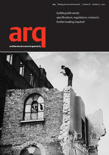
arq-Architectural Research Quarterly
Innovating Ideas in Architecture and Visual Artsarq-Architectural Research Quarterly, published by Cambridge University Press, is a leading journal in the fields of architecture, visual arts, and performing arts. With an ISSN of 1359-1355 and an E-ISSN of 1474-0516, the journal has successfully captured the essence of architectural research since its inception in 1995. Recognized for its rigorous academic contributions, it currently holds a Q4 quartile in Architecture and a Q3 quartile in Visual Arts and Performing Arts as of 2023, reflecting its commitment to advancing knowledge within these disciplines. While it does not offer Open Access, it remains a crucial resource for scholars, professionals, and students seeking to explore innovative ideas and practices in architecture and the arts. The journal features a diverse range of articles that foster interdisciplinary dialogue, making it an indispensable platform for those interested in shaping the future of architectural discourse.
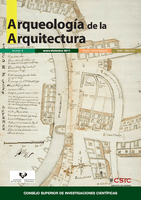
Arqueologia de la Arquitectura
Connecting Archaeology with Architectural ExcellenceArqueologia de la Arquitectura is a premier scholarly journal published by CONSEJO SUPERIOR INVESTIGACIONES CIENTIFICAS-CSIC, specializing in the intricate intersections of architecture, archaeology, and conservation. Since its inception in 2002, this Open Access journal has provided researchers, professionals, and students with a platform to share innovative findings that deepen our understanding of architectural heritage and its archaeological contexts. Based in Spain, it has demonstrated remarkable academic rigor and impact, achieving Q1 rankings in multiple categories, including Architecture and Visual Arts and Performing Arts, alongside a Q2 in Archaeology as of 2023. With a robust presence in Scopus, ranking within the 88th percentile for Visual Arts and Performing Arts, Arqueologia de la Arquitectura stands as a crucial resource for those dedicated to the preservation and study of our built heritage, encouraging interdisciplinary dialogue and research advancements in these elegant fields of study.
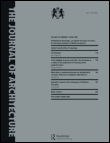
Journal of Architecture
Connecting theory and practice in contemporary architecture.Journal of Architecture, published by ROUTLEDGE JOURNALS, TAYLOR & FRANCIS LTD, stands as a pivotal platform for scholarly discourse in the ever-evolving field of architecture. Established in 1996, this esteemed journal boasts an impressive impact factor, categorized as Q2 in Architecture and Q1 in Visual Arts and Performing Arts, reflecting its significant contribution to both disciplines. With a robust Scopus ranking positioning it in the 85th percentile among Visual Arts and Performing Arts and the 57th percentile within Engineering Architecture, the journal serves as an essential resource for researchers, professionals, and students alike. The Journal of Architecture features innovative research and thoughtful analysis that shape contemporary architectural practices and theories, encouraging interdisciplinary dialogue. Engaging with this journal allows readers to stay abreast of critical advancements and emerging trends, fostering a deeper understanding of architecture's role in societal transformation.

Cuaderno de Notas
Exploring Contemporary Issues Through Creative ExpressionCuaderno de Notas is a dedicated journal that serves as a platform for scholarly discourse within the realm of arts and humanities, published by UNIV POLITECNICA MADRID, ESCUELA TEC SUP ARQUIT, DEPT COMPOSICION ARQUITECT. With an ISSN of 1138-1590 and an E-ISSN of 2386-8376, this open-access journal has been committed to free dissemination of knowledge since 2009. As of 2023, it holds a Q4 ranking in the arts and humanities category, reflecting its emerging presence in the academic community with a Scopus rank of #483/552 and a 12th percentile standing. Cuaderno de Notas aims to foster interdisciplinary research and creative expression, making it an essential resource for researchers, artists, and students seeking to engage with contemporary issues in the arts and humanities. Its base in Madrid, Spain, positions the journal at the cultural crossroad of European and global artistic innovation, ensuring its contributions are both timely and relevant.
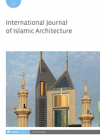
International Journal of Islamic Architecture
Cultivating Interdisciplinary Insights into Islamic DesignThe International Journal of Islamic Architecture, published by INTELLECT LTD in the United Kingdom, is a pivotal scholarly resource dedicated to the exploration of Islamic architecture, design, and cultural expressions within a contemporary framework. With ISSN 2045-5895 and E-ISSN 2045-5909, this journal targets an interdisciplinary audience by bridging the gap between architecture, geography, urban studies, and the arts. Established in 2012, it has swiftly garnered recognition, achieving notable rankings such as Q3 in Architecture and Q2 in Visual Arts and Performing Arts by 2023. Although it currently does not offer open access, its articles are meticulously peer-reviewed, ensuring high academic standards and relevance. Emphasizing the significance of Islamic architectural heritage in global contexts, the journal seeks to foster innovative perspectives and critical discourse, making it an essential platform for researchers, professionals, and students alike to engage with contemporary architectural practices and cultural dialogues.

Ra-Revista de Arquitectura
Nurturing a reflective cultural heritage through research.Ra-Revista de Arquitectura is an esteemed open-access journal published by UNIV NAVARRA, SERVICIO PUBLICACIONES in Spain, dedicated to the fields of architecture and the visual arts. With an ISSN of 1138-5596 and an E-ISSN of 2254-6332, this journal aims to foster a critical dialogue among scholars, practitioners, and students by offering original research, reviews, and case studies that challenge conventional architectural paradigms and inspire innovation. Since transitioning to an open-access model in 2012, Ra has expanded its reach, allowing free access to knowledge that resonates within both academic and professional communities. Although the journal is currently ranked in Q4 in its respective categories, it remains a vital platform for emerging voices and advancements in the architecture and visual arts disciplines. Researchers can find valuable insights that push the boundaries of both theory and practice. The journal is part of a vibrant academic tradition, contributing to a deeply reflective cultural heritage, and it invites contributors from diverse backgrounds to submit their works for consideration.

Architecture and Culture
Fostering Dialogue Between Art and UrbanismArchitecture and Culture is an esteemed journal published by Routledge Journals, Taylor & Francis Ltd, focusing on the intersection of architecture, cultural studies, urbanism, and the visual and performing arts. Since its inception, this journal has become a vital platform for researchers, professionals, and students to explore the multifaceted relationship between architecture and cultural identity within contemporary contexts. With an ISSN of 2050-7828 and an E-ISSN of 2050-7836, the journal reaches a global audience from its base in the United Kingdom. Featuring a commendable Q2 ranking in Visual Arts and Performing Arts and a consistent presence in multiple relevant quartiles, including Q3 in both Architecture and Cultural Studies, it is well-regarded for its scholarly impact. The journal offers a unique opportunity for interdisciplinary dialogue, fostering innovative research that examines how built environments shape and are shaped by cultural narratives. This commitment to advancing knowledge in these fields is reflected in its ongoing publication from 2014 to 2024, making it a pivotal resource for those at the forefront of the discourse on architecture and culture.
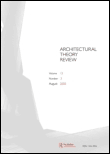
Architectural Theory Review
Unveiling the Theoretical Dimensions of Architecture.Architectural Theory Review is a prestigious academic journal published by Routledge Journals, Taylor & Francis Ltd, located in the United Kingdom. With a focus on the interdisciplinary field of architecture and its theoretical underpinnings, this journal provides a critical platform for the exploration of contemporary architectural debates. Spanning from 2008 to 2016 and resuming from 2018 to 2024, Architectural Theory Review is categorized in the Q3 quartile of Visual Arts and Performing Arts, reflecting its significant contribution to the discourse within this area, as evidenced by its Scopus rank of #330 out of 667 journals. Although it does not offer an open access model, its rigorous peer-reviewed articles are valuable resources for researchers, professionals, and students committed to advancing their understanding of architectural theory. The journal's commitment to fostering insightful dialogue around architectural practices makes it an essential read for anyone in the field.